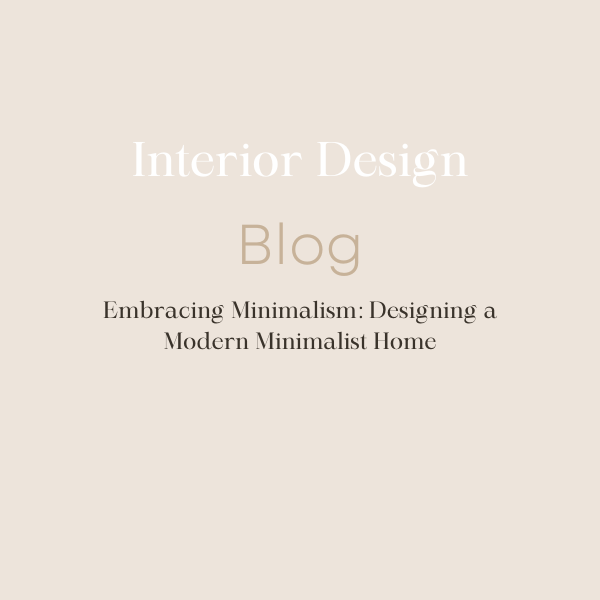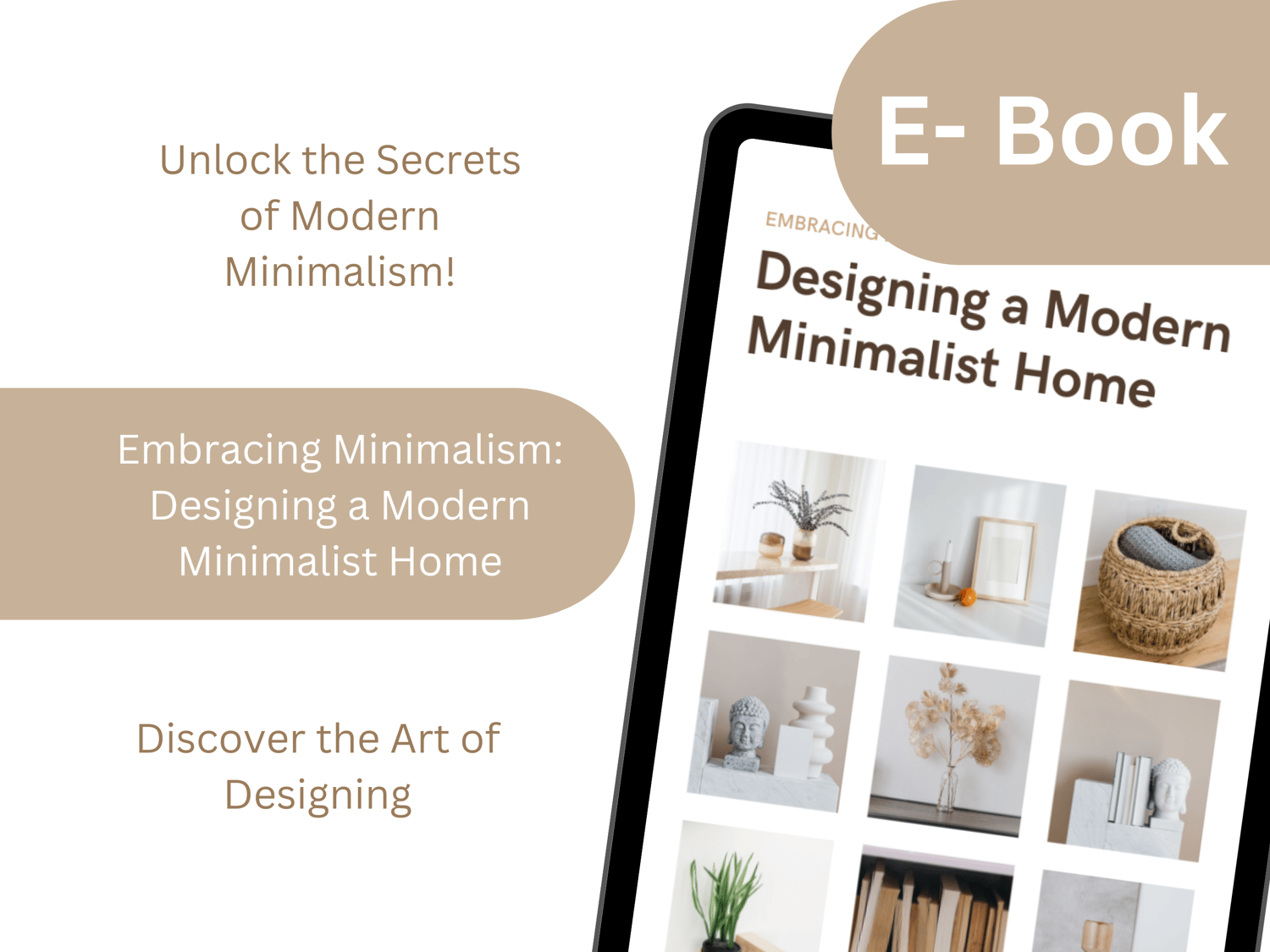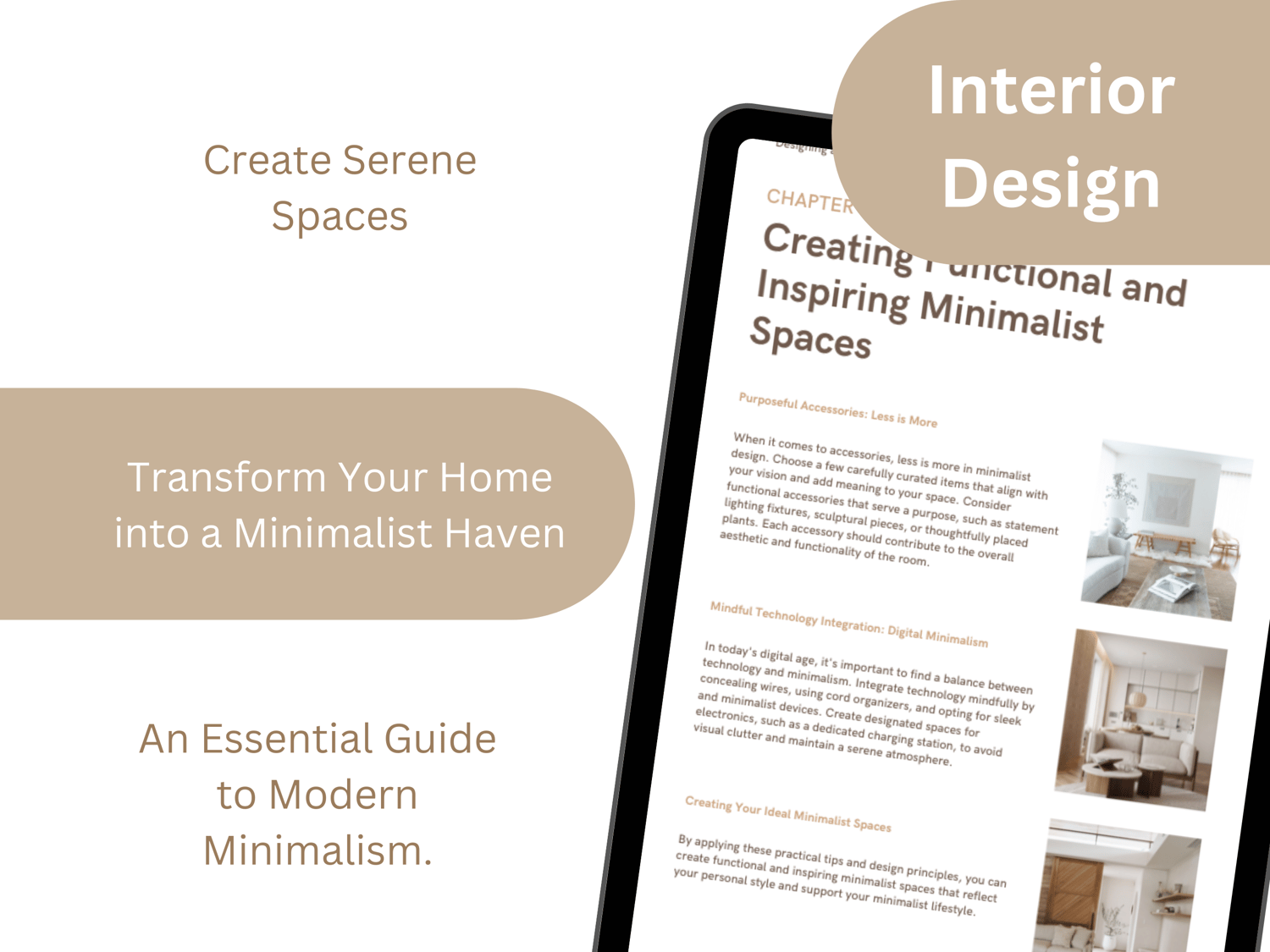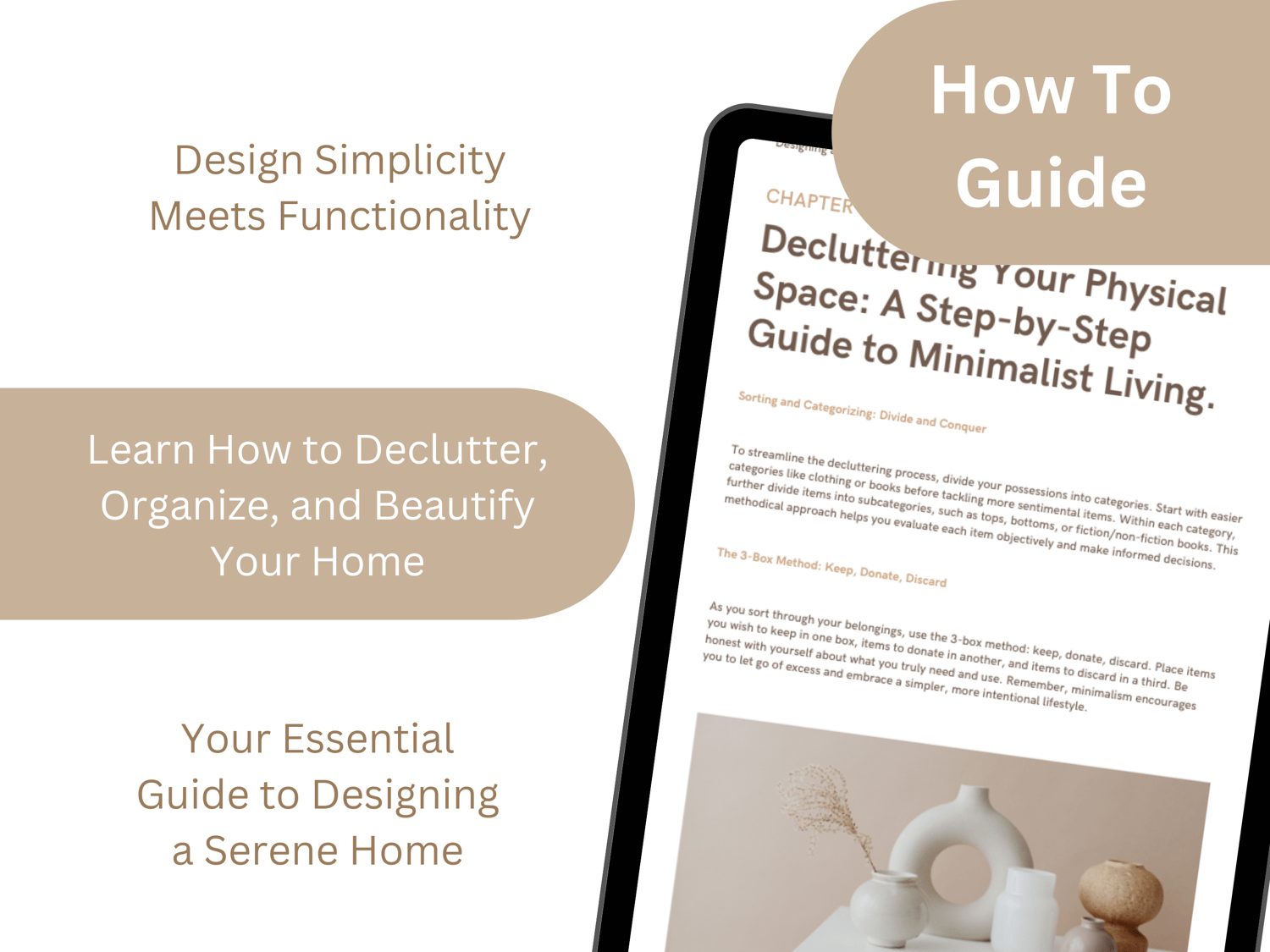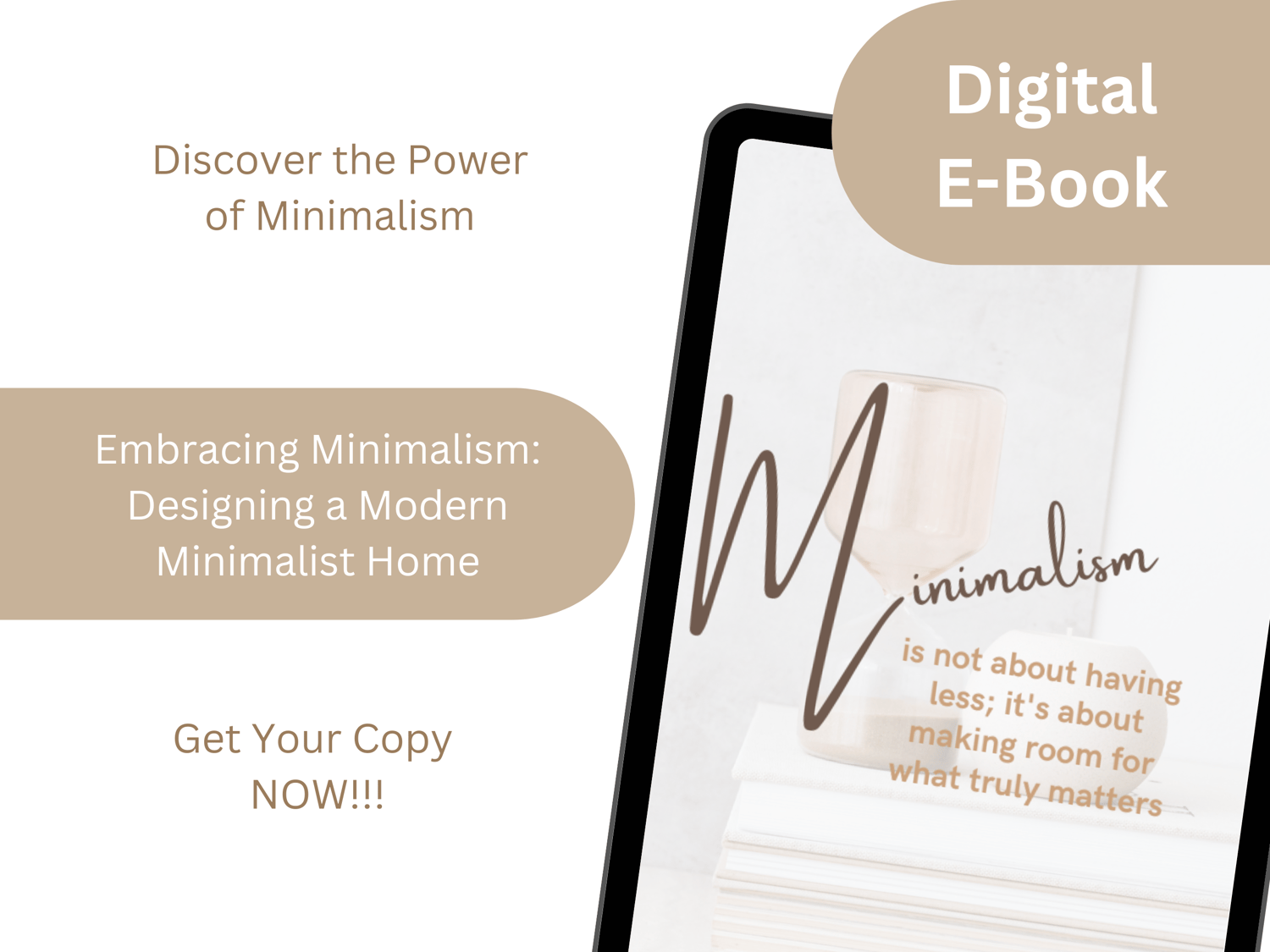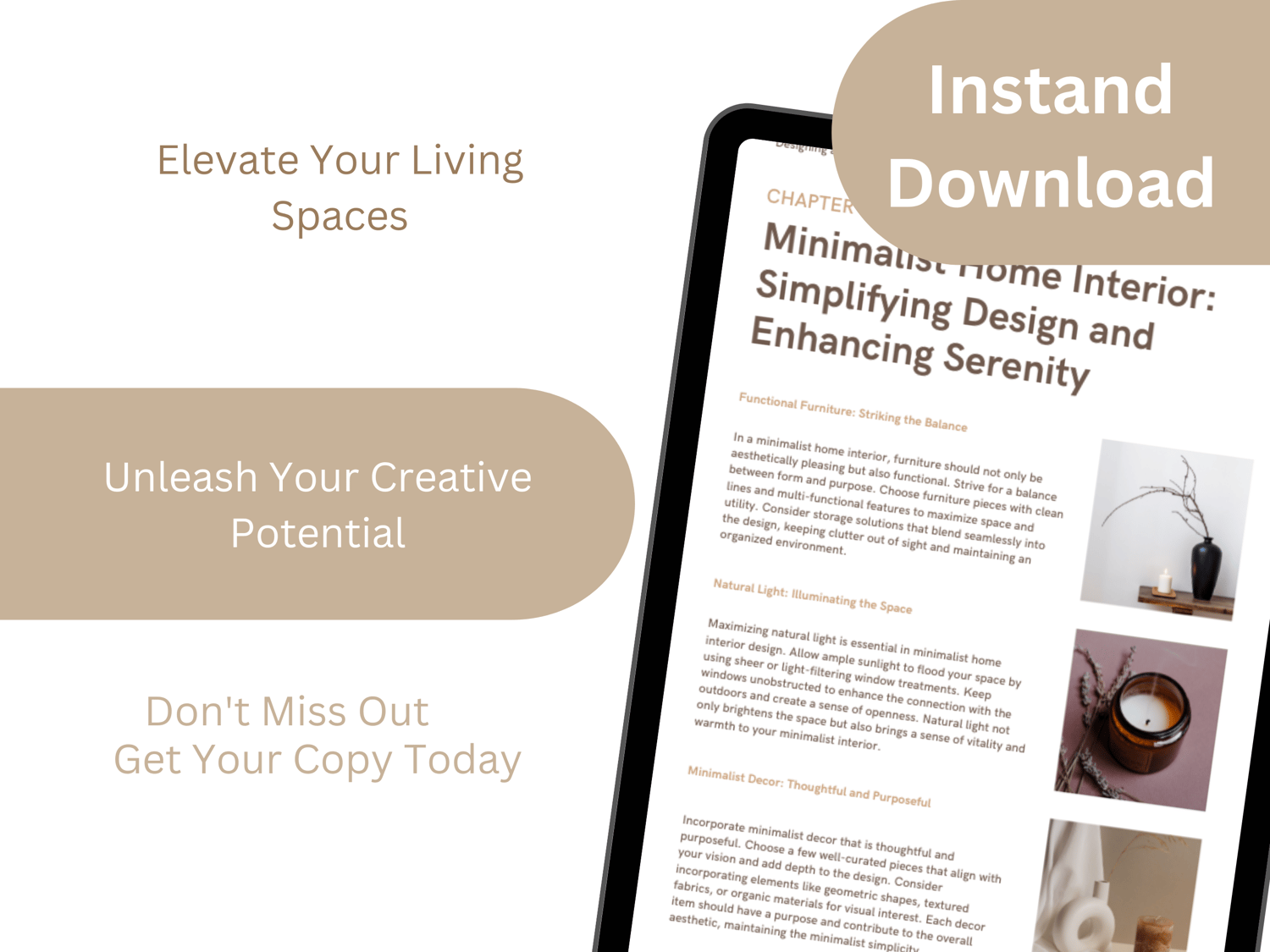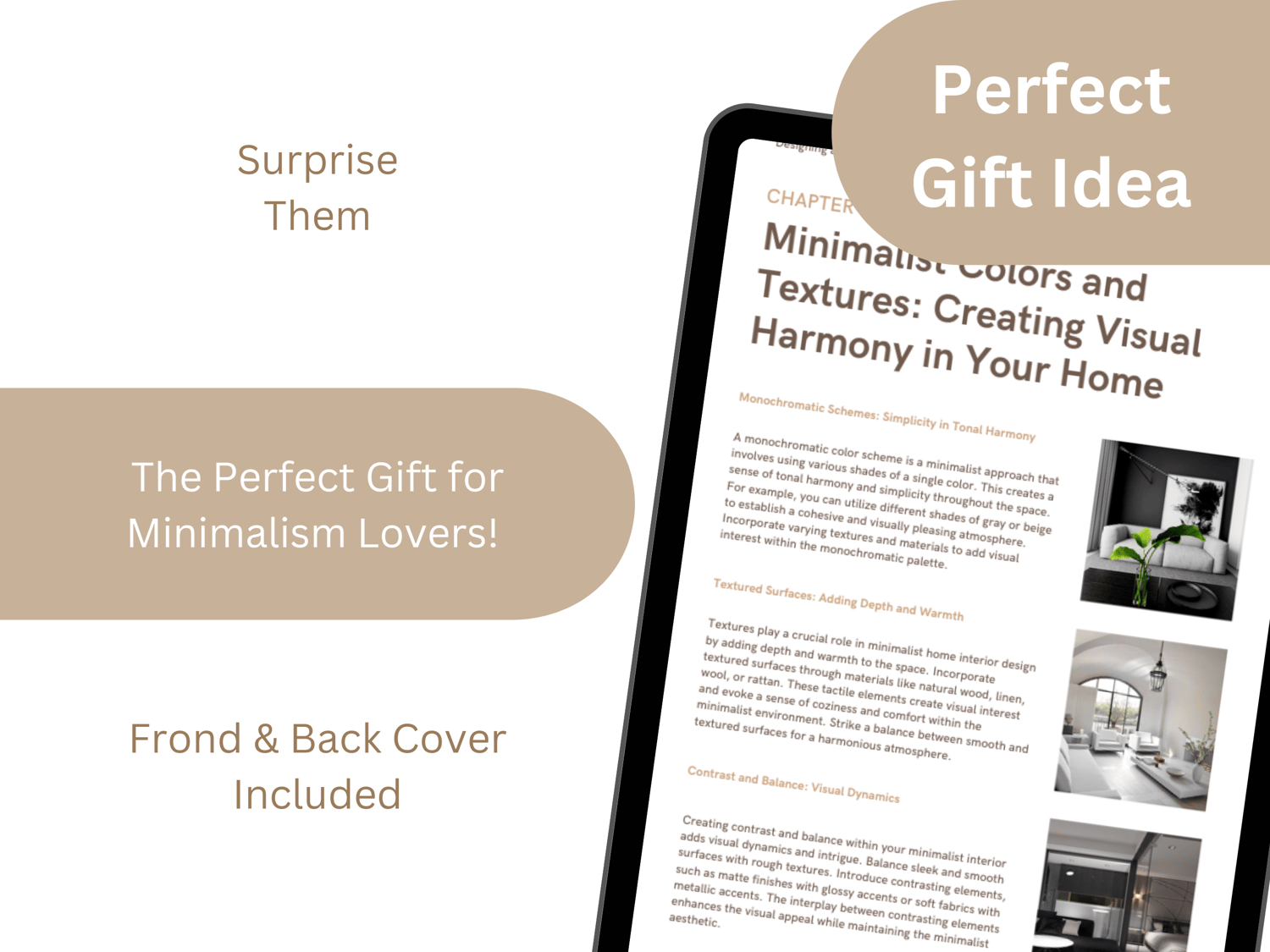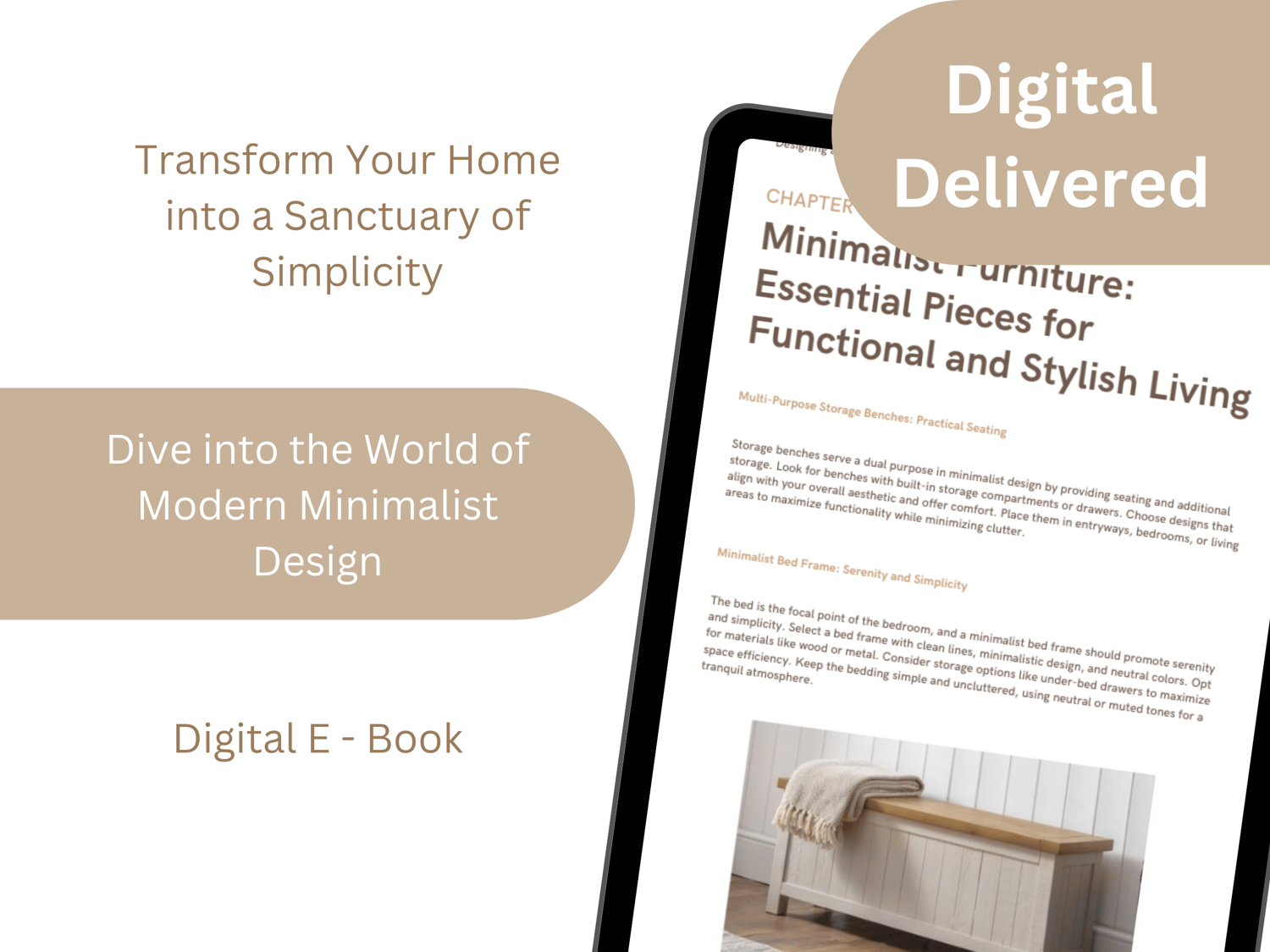In today's fast-paced world, many individuals are seeking solace in minimalism—a lifestyle that emphasizes simplicity and decluttering. The minimalist approach has transcended mere aesthetics and has become a way of life, influencing everything from fashion to interior design. If you're considering designing a modern minimalist home, this blog post is your ultimate guide to creating a serene and stylish living space that reflects your unique personality. Read on to discover key design principles, clever organizational tips, and inspiring ideas to transform your home into a minimalist haven.
- Begin with a Clear Vision:
Creating a modern minimalist home starts with a clear vision of your desired aesthetic. Ask yourself what aspects of minimalism resonate with you the most—clean lines, open spaces, neutral colors, or a combination thereof. Having a clear vision will help you make informed decisions throughout the design process.
- Simplify Your Color Palette:
Neutral colors are the cornerstone of minimalist design. Opt for a palette consisting of whites, grays, beiges, and earthy tones. These hues create a serene and timeless backdrop that allows the architecture and carefully selected furnishings to take center stage. Adding subtle pops of color through artwork or accent pieces can bring vibrancy to the space without overwhelming it.
- Declutter and Streamline:
Minimalism thrives on decluttering, so it's crucial to eliminate unnecessary belongings and streamline your possessions. Adopt a "less is more" mentality when selecting furniture and decor. Choose pieces with clean lines and functional designs that serve a purpose while adding visual interest.
- Embrace Natural Light:
Light plays a vital role in minimalist design, as it enhances the feeling of openness and airiness. Maximize natural light by keeping windows unobstructed and using sheer curtains or blinds. If privacy is a concern, opt for frosted or textured glass.
- Focus on Functional Furniture:
When selecting furniture, prioritize function over form. Choose pieces that serve multiple purposes, such as storage ottomans or multifunctional sofa beds. Keep furniture to a minimum to maintain an uncluttered and spacious feel. Built-in storage solutions, like hidden shelves or floor-to-ceiling cabinets, can help keep belongings organized and out of sight.
- Incorporate Organic Elements:
Introducing organic elements, such as indoor plants or natural materials like wood and stone, can add warmth and texture to a minimalist home. Select plants that are easy to care for, like succulents or snake plants, to maintain the simplicity of the space.
- Pay Attention to Detail:
Minimalism doesn't mean forsaking all decorative elements. It's about carefully curating objects that bring joy and meaning to your space. Select a few statement pieces, like a striking artwork or a sculptural lamp, to add personality and create focal points.
Designing a modern minimalist home is a journey toward simplicity, functionality, and tranquility. By adhering to the key principles mentioned above, you can create a serene and stylish living space that reflects your unique style and fosters a sense of calm. Embrace minimalism, and let your home become a sanctuary for your mind and soul.
If you found this guide helpful, subscribe to our mailing list to receive more tips and inspiration for creating a minimalist lifestyle. Don't forget to share this blog post with your friends and family who might also be interested in embracing minimalism.
We would love to hear your ideas and suggestions for future topics—let us know what you want to learn more about in the comments section below.


